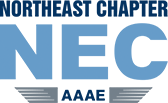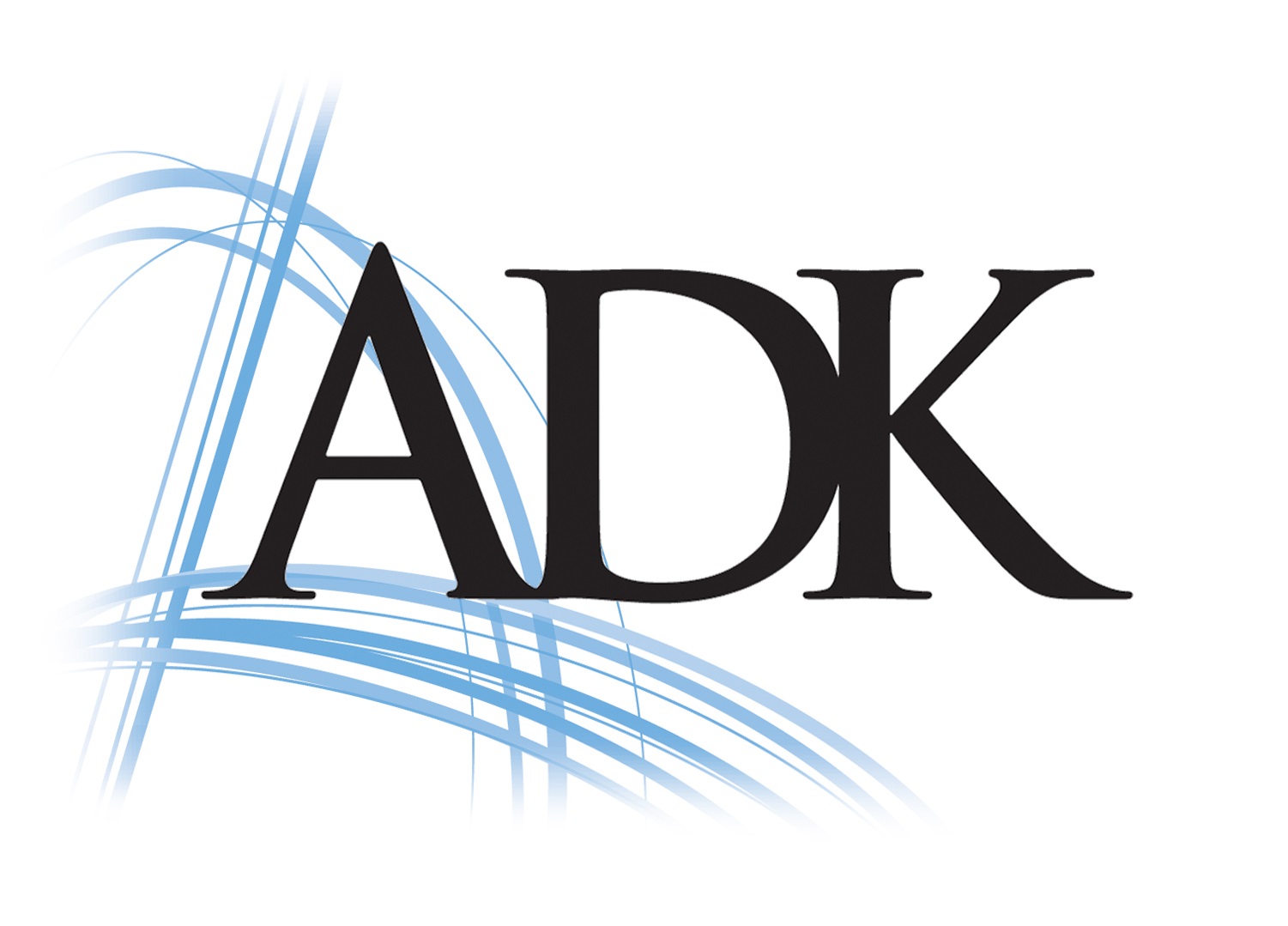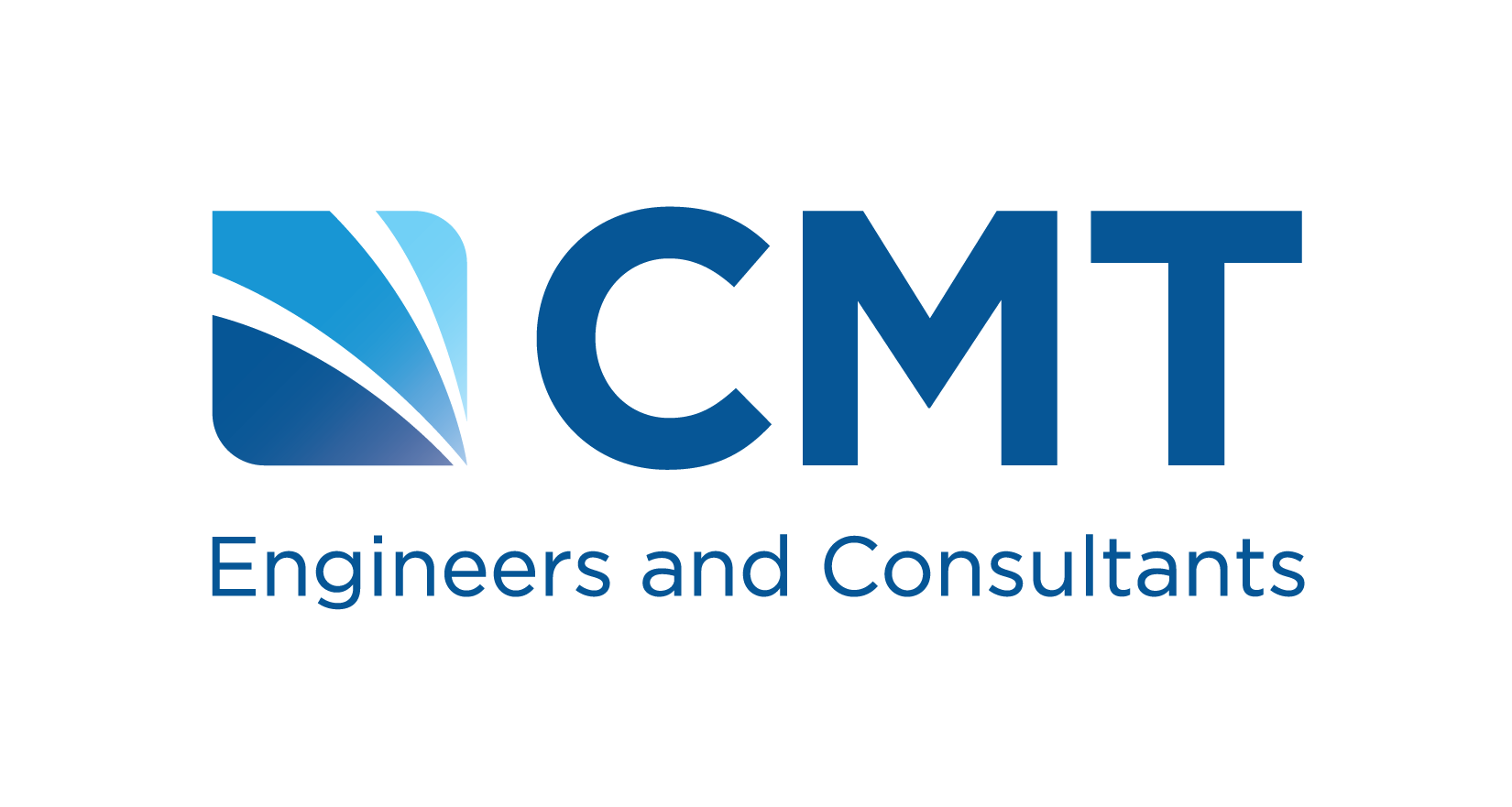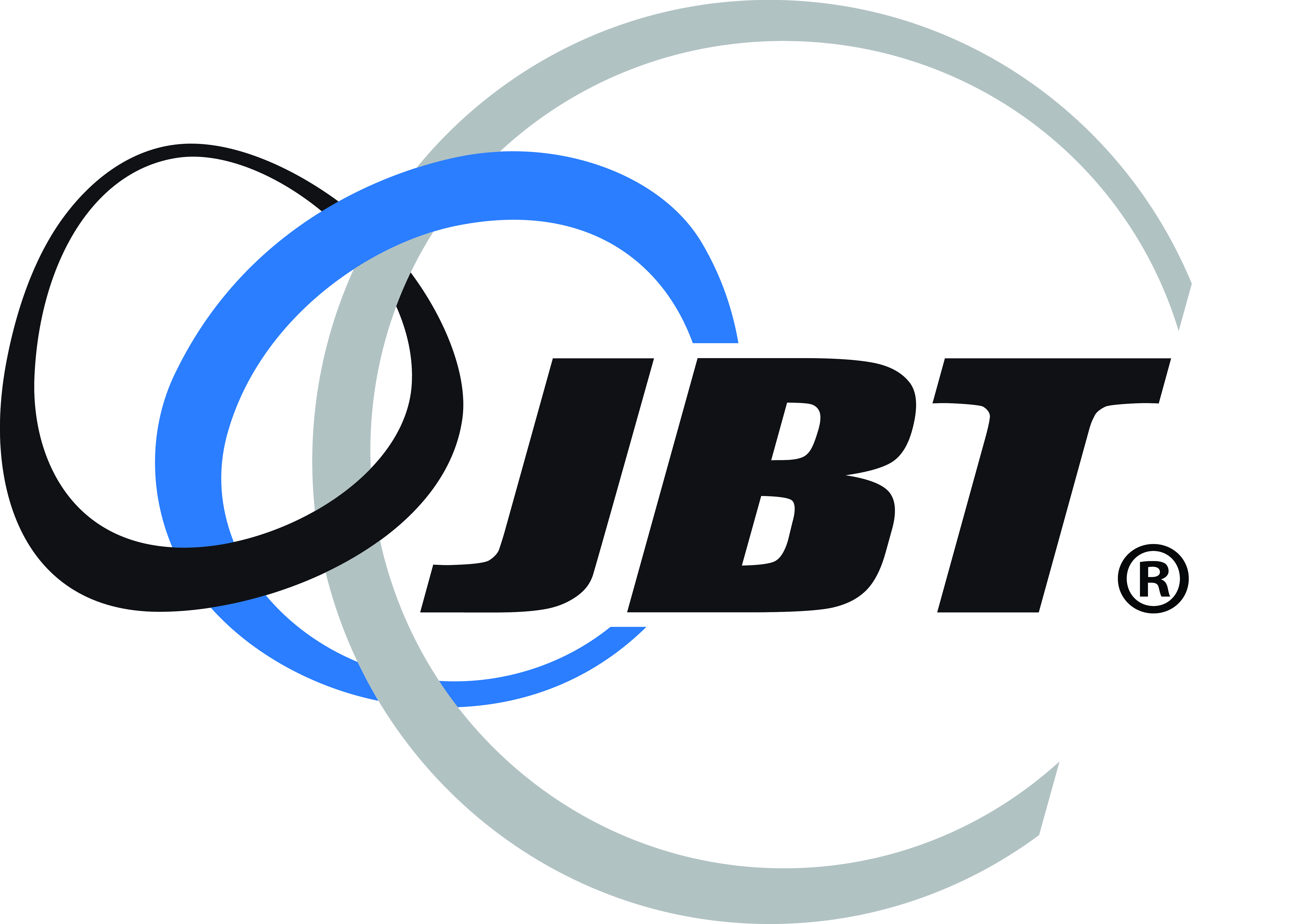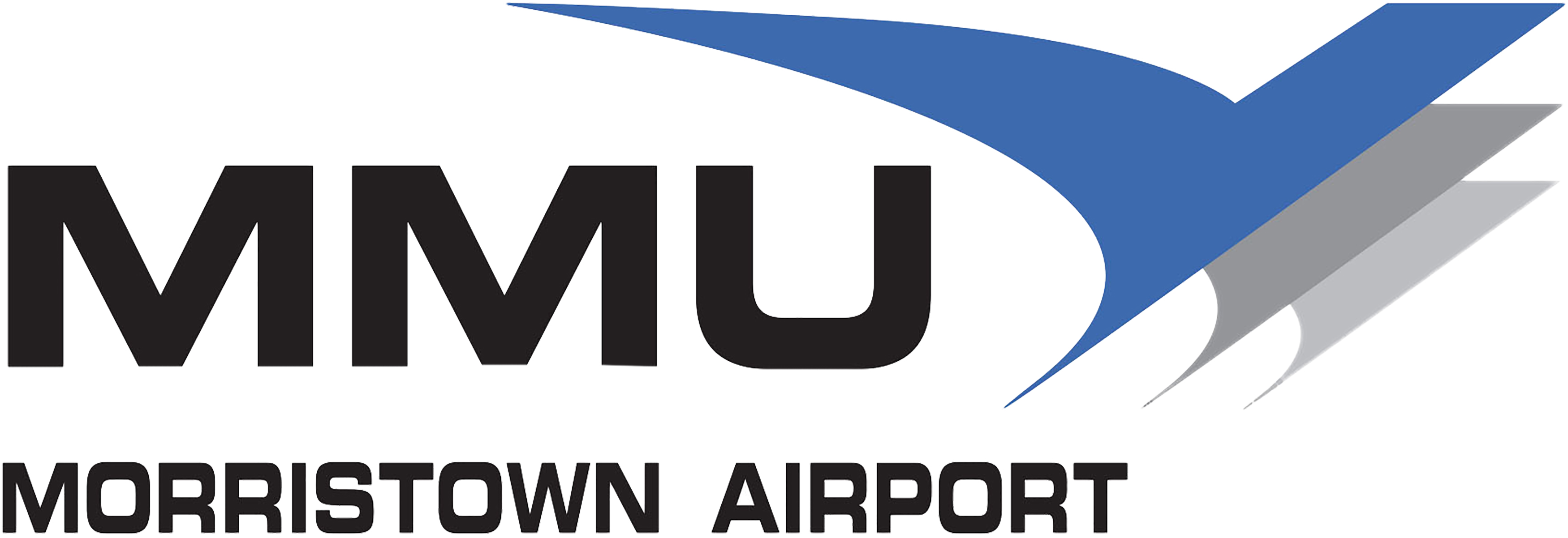NEC/AAAE is pleased to be working with the FAA to bring you the most up-to-date information in the areas of airport planning, design, finance, management, safety, environmental issues, engineering, and field lighting. We are in the process of selecting speakers and will update the schedule as information becomes available. If you have any questions please contact Ari Gimbel, Program Director, NEC/AAAE at [email protected].
Click the session track the view the session description.
Monday, March 12 | ||
|---|---|---|
| 9:00am – 7:00pm | Registration | |
| 10:00am | Exhibit Hall Opens | |
| 11:30am – 1:30p | Lunch | |
| 1:30pm – 3:00pm | Airports Division Managers Briefing | |
| 3:00pm – 3:30pm | Break | |
| 3:30pm – 5:00pm | Concurrent Session 1 | Engineering |
| Operations | ||
| Management | ||
| Finance, Environmental & Planning | ||
| Hot Mix Asphalt Workshop | ||
| 5:00pm – 7:00pm | Ice Breaker Reception | |
Tuesday, March 13 | ||
| 7:00am – 6:45pm | Registration | |
| 7:00am – 8:00am | Breakfast | |
| 8:00am – 8:30am | Opening Session | |
| 8:00am – 6:45pm | Exhibit Hall Open | |
| 8:30am – 10:00am | Concurrent Session 2 | Engineering |
| Operations | ||
| Management | ||
| Finance, Environmental & Planning | ||
| Hot Mix Asphalt Workshop | ||
| 10:00am – 10:30am | Break/Exhibit Hall | |
| 10:30am – 12:00pm | Concurrent Session 3 | Engineering |
| Operations | ||
| Management | ||
| Finance, Environmental & Planning | ||
| Hot Mix Asphalt Workshop | ||
| 12:00pm – 1:30pm | Lunch | |
| 1:30pm – 3:00pm | Concurrent Session 4 | Engineering |
| Operations | ||
| Management | ||
| Finance, Environmental & Planning | ||
| Hot Mix Asphalt Workshop | ||
| 3:00pm – 3:30pm | Break/Exhibit Hall | |
| 3:30pm – 5:00pm | Concurrent Session 5 | Engineering |
| Operations | ||
| Management | ||
| Finance, Environmental & Planning | ||
| Hot Mix Asphalt Workshop | ||
| 5:00pm – 7:00pm | Reception & Cash Bar | |
| 7:00pm – 9:00pm | Dinner on Your Own | |
Wednesday, March 14 | ||
| 7:00am | 5k Fun-Run/Walk | |
| 7:00am – 12:00pm | Registration Open | |
| 7:00am – 8:30am | Continental Breakfast | |
| 8:30am – 10:00am | Concurrent Session 6 | Engineering |
| Operations | ||
| Management | ||
| Finance, Environmental & Planning | ||
| Hot Mix Asphalt Workshop | ||
| 10:00am – 10:30am | Break | |
| 10:30am – 12:00pm | Concurrent Session 7 | Engineering |
| Operations | ||
| Management | ||
| Finance, Environmental & Planning | ||
| Hot Mix Asphalt Workshop | ||
| 12:00pm – 1:00pm | Lunch | |
| 1:00pm | Conference Concludes | |
Session Descriptions Sessions are added as speakers are confirmed.
Session 1
Engineering
FAA Tech Center R&D report on Pavements
Jeffrey Gagnon
Jeffrey Gagnon joined the Airport Pavement Technology R&D branch in August 2007 as the Airport Pavement R&D Section Manager. He is a civil engineer with over 20 years of experience in the aviation industry. He has worked with several internationalengineering firms on a diverse range of projects ranging from design and construction of large international airports to pavement research studies. He earned his Bachelor’s degree in Civil Engineering from the University of New Hampshire in 1990 and a Master‘s of Engineering from Texas A&M University in 1992. He is a licensed professional engineer in the state of North Carolina and a member of the ASCE Airfield Pavement Committee.
Operations
Eastern Region Discrepancy Report
Danielle Cirimello
This presentation will discuss Part 139 discrepancy trends and best practices.
Danielle Cirimello is an Airport Certification Safety Inspector for the Federal Aviation Administration in the Eastern Region. Danielle graduated from Dowling College with a Bachelor of Science degree in Aviation Management. While attending Dowling College, she completed a two-year internship with the FAA where she received extensive training on the Part 139 – Airport Certification Program. Danielle also worked in airport operations for the Port Authority of NY & NJ. Danielle began in airside construction at Newark Liberty International Airport and then proceeded to airside and landside operations at John F. Kennedy International Airport. She has held a variety of positions in airport operations, including Assistant Airport Duty Manager. Danielle looks forward to her new role as an Airport Certification Safety Inspector and her responsibility to ensure Part 139 compliance for the Office of Airports.
New Aviation Fuel Handling Requirement
Ward Hoekstra
This presentation will include the following information:
- What does 139.321 Require?
- The New Aviation Fuel Handling Requirements / Changes to NFPA 407.
- What are Part 139 Inspectors finding?
- How to successfully comply with the requirements of 139.321.
Ward has worked for over 35 years in the Aviation Industry and has a Bachelor of Science in Business Management from Saint Peters University. He began his career with the Port Authority of NY & NJ, where he started as an emergency services responder at the Holland and Lincoln Tunnels. In the early 1980’s Ward changed his focus and started working at Newark International Airport, where he experienced all areas of airport operations, both landside and airside, with increasing areas of responsibility. He also worked John F. Kennedy Airport in Airport Operations during that time. Ward retired from the Port Authority as an Airport Duty Manager who was responsible for the coordination and oversight of all airside construction projects during the most aggressive construction period in Newark International Airports history. After retiring from the Port Authority in 2016, he started his second career working for the Federal Aviation Administration as an Airport Certification Safety Inspector in the Eastern Region, responsible for the Annual Airport Certification Inspections of Part 139 airports. He is also an Airport Certified Employee in Operations and Security, by the AAAE. Since joining the FAA he has attended the FAA Academy in Oklahoma City for aircraft accident Investigation training, regulation enforcement, as well as, Aircraft Rescue and Fire Fighting training.
Management
Update on Latest FAA Regulations
Loretta Alkalay & Maxine Lubner
We will provide an update of the latest FAA regulations, the reasoning behind them and the cases related to drones and their use in complex airspace.
Loretta, a frequent instructor at Vaughn College has completed a career with FAA as the Eastern Region Counsel and currently has an active career in aviation legal consulting and training in the US and internationally. Loretta advises governments on ways to upgrade their aviation systems and regulations so as to meet international standards, and has consulted for several aviation companies and organizations. Loretta has designed and taught numerous courses in SMS and related areas and has also been able to teach within academia, advise policy makers and leaders within the international aviation industry and can connect with the general and lay public via her press and documentary work. Loretta has also become a leading authority on drone laws and regulations around that burgeoning industry.
Maxine is the chair of the management department at Vaughn College, and also the project manager for the SMS Certificate and for the Atlas Air RFP. Maxine’s experience includes research and development epidemiology, predictors of aviation occurrences, pilot decision making assessments and manuals for the FAA, investigation of aviation safety in developing countries, and the design of several degrees and certificates in aviation, management, flight, air traffic control and related areas. Maxine holds a FAA Private Pilot Certificate. Maxine has also published and presented on topics of aviation safety, aviation education, and educational assessment at national and international academic and industry forums. Maxine has served as a media representative for Vaughn College and advises other colleges on the development of their programs.
UAS Operations and Applications at Airports
Aaron Lawrence, Woolpert
This session will discuss how to address UAS operations in Master Plans and ALPs and how to best prepare the airport and airspace for UAS applications. How this technology could be utilized at airports will also be discussed, suggesting possible ideas and challenges to using UAS at an airport for various applications. The discussion will include case studies of airports already incorporating UAS into their plans and longer-term strategies.
Aaron Lawrence is a GIS and remote sensing specialist with more than 15 years of experience developing processes for data creation, data exploitation and information gathering. In his current role as a Remote Sensing Specialist and Unmanned Aerial Systems (UAS) Team Lead, Aaron researches UAS applications, develops and tests new capabilities, and trains new pilots and staff on UAS deployment and data processing. He leverages his diverse geospatial background, which encompasses traditional field surveying, GIS and remote sensing, along with his genuine enthusiasm for the mapping industry to discover new and better ways to apply technology and fuse data to meet the needs of multiple markets. Having implemented industry-quality software using a broad knowledge of geomatics, with particular emphasis on GIS, he spearheads algorithm research and development for the U.S. intelligence community. In the field of UAS technology, Aaron is integral in establishing workflows for data collection, allowing Woolpert to approach collections with confidence. By understanding the technical, governance and logistical aspects of UAS operations, we are able to save our clients time and money, and focus on producing quality products. The overall UAS workflow consists of site identification and requirements definition, Certificate of Waiver (COW) process, data acquisition, data processing, and data delivery. This workflow has benefited from our flight acquisition experience in combination with the new paradigm provided by UAS operation and processing.
Finance, Environmental & Planning
FAA Airport Improvement Program Update
Patricia Henn
Will provide a look ahead to the FY 2018 AIP Grant Season and discuss trending financial topics such as: Buy American Act, Procurement, Grant Payments and Audits.
Patricia Henn is the Manager of the FAA Eastern Region Airports Division Planning and Programming Branch, a position she has held since 2016. The branch is responsible for Airport Planning, Environmental, and Financial Programs including the Airport Improvement Program and the Passenger Facility Charge program for the Eastern Region. Prior to assuming her position as the Branch Manager, Patricia was the AIP and PFC Program Manager and Financial Team Lead in the Eastern Region Airports Division and a Civil Engineer for the FAA’s Airways Facilities Division. In 2018, Patricia will be celebrating her 10th year with the Airports Division and 27 years with the agency. She holds a bachelor’s of science degree in Civil Engineering from Manhattan College.
FAA NAS Performance Based Navigation Strategy - Relationship to Airport Planning and Development
William Reinhardt
William Reinhardt is an aviation planner with the Federal Aviation Administration (FAA), Office of Airports Planning and Environmental Division in Washington, D.C. Mr. Reinhardt has 18 years of diverse aviation experience which blends working in the federal and private sectors, both centered on supporting the planning, development, and maintenance of aviation infrastructure. His experience ranges from working national policy and program issues to supporting the busiest commercial service airports, military bases, and general aviation airports both domestic and abroad.
Hot Mix Asphalt
Pavement Design and Preperation of Contract Specification
Guillermo Felix
This presentation will discuss current FAA flexible pavement design methods including the thickness selection of binder and surface courses. The presentation will also include the preparation of construction specification including the selection of the Performance Grade Asphalt (PG) selection. The Eastern Region Laboratory Procedures Manual (ERLPM) and current FAA hot mix asphalt specifications P-401 and P-403 will be introduced.
Guillermo Felix occupies the position of Regional Engineer in the FAA Eastern Region’s Airports Division. Guillermo received his Bachelor Degree in Civil Engineering from the Autonomous University of Santo Domingo in 1981 and his Master Degree in Structural Engineering from the City College of New York in 1985. Guillermo started with the FAA in June of 1990 as the Eastern Region Paving Engineer and since then has been involved in numerous projects involving asphalt pavement for airports. He also re-wrote the last version of the Eastern Region Laboratory Procedures Manual (ERLPM). He has been a speaker for the Airport Asphalt Pavement Workshop for 28 years.
Session 2
Engineering
Pavement Related Advisory Circulars: Update of AC 150/5370-10
Gregory Cline
Gregory Cline, FAA National Headquarters Airports Safety and Standards’ pavement Civil Engineer will summarize work in Airports Safety & Standards Airport Engineering Division (AAS-100), provide a brief overview of pavement related Advisory Circulars (AC), and discuss the status of DRAFT AC 150/5370-10H Standard Specifications for Construction of Airports. Presentation will include overview of the principle and significant changes in the updating of DRAFT “-10H” and an open discussion on “common” questions and comments received.
Greg Cline is the Airport’s Pavements Civil Engineer from the Federal Aviation Administration, Airports Safety and Standards, Airport Engineering Division (also known as AAS 100) in Washington DC. Greg is an engineering graduate of the University of Wisconsin-Platteville and received his MS in Systems Management from the University of Southern California; is a licensed Professional Civil Engineer in Wisconsin and California; and is member and past Chair of ASCE’s T&DI Airfield Pavement Committee.
Greg has over 35 years of pavement and materials experience in both public and private sectors, including 7+ years FAA Airport’s Pavement SME, 10+ years as NAVFAC Airfield Pavements SME, and 10+ years as Chief Engineer of accredited laboratories.
Operations
Airfield Markings – Common Discrepancies and Best Practices
Donna Speidel
Airfield markings are commonly on the list of discrepancies after an FAA Part 139 inspection. What does an inspector look for, what is missing, and what can airport operators do to resolve the issue? An FAA inspector will present on the common problems associated with airfield markings and Donna Speidel will discuss best practices as outlined in the Airfield Marking Handbook that may lead to better results.
Donna Speidel is President of Sightline, Inc., a specialty consultant that provides training and other services for the industry to promote best practices for the installation and maintenance of airfield markings. Donna’s 40+ years of experience in the pavement marking field has given her a unique perspective on the challenges airports face in achieving effective and long-lasting marking systems. As primary author of the Airfield Marking Handbook published for the IPRF and FAA in 2008, Donna will touch on a few of the best practices that will bring results.
Development of Methodologies for Airfield Markings Quality Control and Effectiveness
John McNeely
Highly visible markings enable airports to carry out safe operations at an airfield. Both regulators and operators strive every day to raise the standards and ensure compliance. John McNeely will be presenting methodologies and best practices to build predictive maintenance plans for airfield markings. Mr. McNeely will address topics such as implementing third-party quality control assessments, performing continuous retro-reflectivity measurements, and building a database of marking historical information to build predictive maintenance models. These new methodologies will allow airports to allocate time and resources efficiently, enforce independent and objective inspection systems, and comply with FAA.
John McNeely is an aviation industry expert with over 30 years of experience in the transportation sector ranging from roads and highways to airfield pavements. Mr. McNeely is President and CEO of Hi-Lite Airfield Services, LLC, a global leader in Airfield Markings Maintenance, Contracting and Consulting. Mr. McNeely has led the company to success with extensive background in airport contract management, research and development, contracting operations and specialization in a wide range of airfield maintenance activities including; airport safety, horizontal signage, pavement maintenance, and runway skid resistance management. Mr. McNeely works with airport operators, industry professionals and regulators around the world to elevate aviation safety standards including quality control and best practice methodologies for installation and maintenance of airfield markings. Mr. McNeely earned an MBA from the University of Buffalo where he concentrated in Corporate Finance. Mr. McNeely is a past board member of the New York Aviation Management Association (NYAMA) and is affiliated with various groups such as the American Association of Airport Executives(AAAE), Airports Council International (ACI), American Traffic Safety Services Association (ATSSA), Association of the United States Army, and many others.
Management
New Technologies and Safety Initiatives for the 21st Century
Jennifer Solomon, Maria Stanco, James Kenney, Scott Foose
Our national aviation system is a vital transportation network connecting people and goods across the country and to other parts of the world. As we carry out our mission to provide the safest, most efficient aerospace system in the world, we are accountable to the American public. The views of communities --including local residents, the general public, and stakeholders --are important to the FAA as we take the next steps to advance the national aviation system. The new Eastern Regional Administrator, Jennifer Solomon will speak on FAA's latest initiatives to improve airspace performance including NextGen. Maria Stanco will cover the latest approaches in stakeholder engagement. James Kenney and Scott Foose will speak about transitioning the national airspace system away from legacy technology, to a more modern, resilient and beneficial infrastructure based on GPS and discuss this game changing technology, the 2020 mandate, equipage levels in Pennsylvania, and how airport authorities are helping General Aviation make the transition. Our final speaker, Ryan Heeralall, will look at national runway safety initiatives to address runway incursions through a corporate approach.
Maria Stanco is the Deputy Regional Administrator for FAA’s Eastern Region. Her previous position was as Senior Advisor in the Office of the Regional Administrator. Maria came to the FAA in 2001 working on environmental issues, serving as the Environmental Program Manager for FAA Eastern Region Airports Division. Prior to coming to FAA, Maria spent eleven years at the Environmental Protection Agency in a variety of positions including, redeveloping Brownfield sites, coordinating regional compliance strategies and as an environmental scientist preparing air quality permits. While at EPA, Maria was awarded six EPA bronze medals for her work on several interagency workgroups. Maria has an undergraduate degree in Chemistry, from Mount Holyoke College and a Master’s Degree in Regional Planning from the University of North Carolina at Chapel Hill. She is a member of the American Planning Association (APA) and the American Institute of Certified Planners (AICP).
Jennifer Solomon became the FAA Regional Administrator for the Eastern Region on December 27, 2017. The Eastern Region encompasses the geographical area that includes Delaware, Maryland, New Jersey, New York, Pennsylvania, Virginia, West Virginia and the District of Columbia. The Region oversees operations at some of the world's busiest airports including, JFK International Airport, LaGuardia Airport, Washington Dulles International Airport, Newark International Airport, Ronald Reagan Washington National Airport and Baltimore/Washington International Airport. Prior to her appointment, Ms. Solomon served as FAA Assistant Administrator for Policy, International Affairs, Environment and Energy (APL) in Washington, D.C. As Assistant Administrator for Policy, International Affairs, Environment, and Energy, Ms. Solomon was responsible for leading the FAA's efforts to foster the safety and capacity of the global aerospace system in an environmentally sound manner. In this role, she focused on FAA's reauthorization efforts, corporate management of international engagement through the FAA's Global Leadership Initiative, and overseeing the agency's environmental activities and initiatives in NextGen and ICAO.
Before joining the FAA, Ms. Solomon served as a Professional Staff Member on the Senate Commerce, Science & Transportation Committee, working on the Subcommittee on Aviation Operations, Safety & Security. She served on the Commerce Committee staff for Chairman Jay Rockefeller, then Ranking Member Bill Nelson. Before joining the Commerce Committee, she served in a variety of roles for U.S. Senator Bill Nelson. In addition to advising on aviation policy, she developed and implemented legislative strategies on homeland security, surface transportation, and immigration policy. Ms. Solomon graduated from Duke University with a degree in Political Science, and originally hails from New York City.
James Kenney is an Aviation Safety Inspector from in the FAA’s Flight Technologies Division in Washington, DC. He primarily works issues related to operational implementation of ADS-B. James previously held positions as Flight Standards District Office inspector and manger, and he was also an air carrier pilot and flight instructor.
Scott Foose is an Industry Relations Advisor and contractor imbedded with the FAA’s Office of NextGen Outreach in Washington, DC. He advises the agency on ADS-B outreach and communications to aircraft owners, operators and trade industry. Scott held positions with the Allegheny Airlines and the Regional Airlines Association. He has a background in airlines operations as a pilot, airline executive, and he has been an industry trade advocate.
The New FAA Critical Aircraft Advisory Circular
William Reinhardt
Explains the factors in making an accurate Critical Aircraft determination to ensure proper airport planning and design in accordance with Advisory Circular 150/5000-17.
William Reinhardt is an aviation planner with the Federal Aviation Administration (FAA), Office of Airports Planning and Environmental Division in Washington, D.C. Mr. Reinhardt has 18 years of diverse aviation experience which blends working in the federal and private sectors, both centered on supporting the planning, development, and maintenance of aviation infrastructure. His experience ranges from working national policy and program issues to supporting the busiest commercial service airports, military bases, and general aviation airports both domestic and abroad.
Hot Mix Asphalt Workshop
Testing Laboratories
Guillermo Felix
This presentation will describe the different requirements that must be met by testing laboratories involved in the pavement project. Accreditation requirement, as required by ASTM D-3666, for testing laboratories developing the Job Mix Formula and conducting Quality Assurance tests will be discussed. Requirement for Contractor Quality control will also be covered.
Guillermo Felix occupies the position of Regional Engineer in the FAA Eastern Region’s Airports Division. Guillermo received his Bachelor Degree in Civil Engineering from the Autonomous University of Santo Domingo in 1981 and his Master Degree in Structural Engineering from the City College of New York in 1985. Guillermo started with the FAA in June of 1990 as the Eastern Region Paving Engineer and since then has been involved in numerous projects involving asphalt pavement for airports. He also re-wrote the last version of the Eastern Region Laboratory Procedures Manual (ERLPM). He has been a speaker for the Airport Asphalt Pavement Workshop for 28 years.
P-401 - A Resident Engineer's Perspective
Christopher H. Gardner
Christopher Gardner, DiDonato Associates Engineering & Architecture, P.C. will discuss the requirements of FAA Items P-401 and P-403 as they pertain to the Construction Resident Engineer's responsibilities during the placement and compaction of plant produced material. The presentation will review the Pre-Pave workshop, placement of the test section, plant requirements, paving equipment, automatic grade control, approval of the underlying surface, and the review and approval of the Contractor's laydown / paving plan. Key discussion points will include the critical nature of establishing daily production lot tonnages and lot sizes for the establishment testing and random sampling intervals, smoothness testing with the 12-foot straightedge, profilograph testing, and verification of grade. Changes, additions, and deletions within the P-401 Specification will be discussed. Enforcement of the Contractor Quality Control Plan, and corrective actions for out of tolerance or out of specification materials will be discussed to conclude the presentation.
Christopher Gardner is a licensed Professional Engineer in New York State with 24 years of experience in design, construction inspection, and materials testing. Mr. Gardner is currently a Sr. Project Engineer with DiDonato Associates Engineering & Architecture, P.C., where he has been involved with design and inspection of multiple airfield projects for the past 21 years, including runway, taxiway, and apron pavement projects. Mr. Gardner began his career with Professional Services Industries, Inc. (PSI), where he spent 3 years performing materials testing, including Marshall Mix Designs, P-401 Laboratory Quality Control Testing, and in-place asphalt density monitoring. Mr. Gardner is a 1993 graduate of the State University of New York, College of Environmental Science and Forestry, and holds a B.S. degree in Forest Engineering.
Session 3
Engineering
Overview of the Modification of Standard Policy & Process
Khalil Kodsi
Mr. Khalil Kodsi is the manager of the Office of Airport Engineering Division. Mr. Kodsi has 34 years of professional engineering experience; with 28 years supporting the Federal Aviation Administration. Mr. Kodsi technical team is responsible for updating advisory circulars on topics related to Airport Design, Pavement Design, Airspace, Heliport Design, Airport Marking and Lighting, Engineered Arresting Systems among other airport related safety areas. The Airport Engineering Division also sponsors research projects and collaborates with the William J. Hughes Technical Center to support improvements to safety guidelines. Mr. Kodsi is the United States representative on the Aerodrome Design and Operations Panel (ADOP) under the International Civil Aviation Organization (ICAO). Mr. Kodsi worked for various FAA branches within the Air Traffic Organization. Mr. Kodsi is a graduate of the University of Maryland, College Park with a Bachelor of Science in Civil Engineering. He is a registered Professional Civil Engineer in the State of Maryland and is a Certified Project Management Professional.
The session will discuss when to consider a MOS, when a MOS is not acceptable, effective duration of a MOS and a systematic walk through the automated process on how to submit a MOS
Operations
Snow Removal from Parking Lots, Decks and Terminal Aprons
Paul Schenk
This presentation will outline the potential cost savings of melting snow when compared to alternatives such as trucking. Other key considerations regarding snow removal from parking lots/decks or terminal ramps will also be reviewed including security concerns, congestion, potential liabilities, and other items.
Paul Schenk began his career in airports at Toronto Pearson as a seasonal snow removal equipment operator in October 2000. In 2003 he took a role as an Airfield Manager and held various management roles with the Airfield Maintenance group until early 2015, including managing Apron Maintenance from 2010-2015. During his time leading the Apron Maintenance group Paul’s key focus was snow removal operations and the extensive use of snow melters. In 2015 Paul took his current role as the Manager, Terminal Development and Activation and has since been responsible for the activation of numerous projects at Toronto Pearson.
Management
Web-Based Applications for Managing Assets at BWI
Julie Spangler, Paul Shank & Ali Logmanni
MAA continues to improve access to airport-wide information using a secure web portal known as Airport Information Retrieval Portal (AIRPortal). MAA has recently released two applications that facilitate critical MAA business functions. Interior Space Manager (ISM) assists with space allocation to display floorplans, tenant information and searchable door numbers. The Projects Locator application a bi-directional tool that maps the extents of capital projects and permit projects around the airport and links them directly to engineering drawings and documents. Conversely, a user can also pull up project documents in the document management system and display the project location on the map.
Paul L. Shank, P.E., C.M., Chief Engineer, Maryland Aviation Administration, Maryland Department of Transportation. Mr. Shank has served as the Chief Engineer at the Maryland Aviation Administration (MAA), Maryland Department of Transportation (MDOT) for over a decade. During that time he has led the planning, design and construction of the billion dollar capital improvement and systems preservation program at Baltimore/Washington International Thurgood Marshall Airport and Martin State Airport. He oversees MAA’s Office of Engineering and Construction, Office of Planning, Office of Environmental Services, and Office of Real Estate and Noise Abatement.
Mr. Shank has over 40 years of experience in airport development and associated transportation, commercial and institutional development. His accomplishments are measured in the billions of dollars of projects completed throughout the United States and overseas. He is a Professional Engineer and a Certified Member of the American Association of Airport Executives. He was the recipient of the 2015 AASHTO President’s Transportation Award for Aviation and in 2016 received the Federal Aviation Administration’s Henry “O” Award. Mr. Shank is a commercial pilot, flight instructor and aircraft owner. Aviation is his passion.
Julie Spangler, GISPMs Spangler has 19 years of experience with implementation of GIS for state and local governments. She is a project manager with the JMT Technology Group out of Hunt Valley, MD and supports a wide range of clients in aviation, maritime and transportation related industries. She has been working with the Maryland Aviation Administration since 2013.
Mr. Ali Logmanni is the Manager of GIS and Engineering Technology at Maryland Department of Transportation, Maryland Aviation Administration, where he has been since 1987. He leads the GIS and Document Management group within the Division of Planning & Engineering, which includes the Airport Information Retrieval Portal (AIRPortal). Mr. Logmanni received his Bachelor of Science in Civil Engineering and Master of Engineering from the West Virginia University Institute of Technology.
How Will TNCs and Autonomous Vehicles Impact the Airport Landside?
Laurence Bauman
This presentation addresses the timing of, and potential impacts from, two top trending landside topics - Transportation Network Companies (TNCs such as Uber and Lyft) and autonomous (driverless) vehicles (AVs). There will be a time within the next 7-10 years where some airport will be the last one to build a new parking structure because TNCs and AVs will render them obsolete. Ongoing research and the latest activity by the companies involved in these technologies dictate the probable timing for this which includes the likelihood of TNCs rolling out driverless ride-hailing vehicles. There is an equal likelihood that within the next 10-12 years airport patrons will be operating their own private driverless vehicles. Both of these actions will dictate a major rethinking of all airport landside infrastructure including dealing with increased curbside congestion and the loss of parking and rental car revenues.
Larry Bauman’s aviation career spans 40 years, a timeframe within which he worked in both the public and private sectors. His public-sector work spans 17 years which included stints with the Florida DOT as the Aviation Planning Manager in the Bureau of Multimodal Planning and with DFW Airport as the Facility Planning Manager. His private sector consulting work spans 23 years and includes airport planning, design and construction administration work. Larry holds civil engineering PE licenses in Florida and Maryland, and in 2003 he and earned his Certified Manager designation from AAAE. Larry has published several industry magazine articles and is a regular presenter at the AAAE/ACC Airport
Planning, Design & Construction Symposium and other industry conferences.
Finance, Environmental & Planning
The Planning, Environmental, Construction and Operational Impacts of the Constructing a Replacement Runway at Delaware Airpark, Dover, DE
Stephen Williams, David Hoppenjans, Gregory Suchanoff, Benjamin Clendaniel & Brian Gearhart
Beginning in the year 2000, the State of Delaware acquired an existing private-owned, public use airfield near the capital of Dover. Over the next 17 years, the state and its partners took a number of managerial, engineering, property and programmatic steps that would eventually lead to the late 2017 opening of a new runway to replace the original 9-27. The presenters will discuss their project experiences and describe the unique challenges of each phase of this effort, concluding with a look forward at the future of the facility with this new infrastructure.
Brian Gearhart is a project manager for the Harrisburg Airports District Office providing program management in support of the Airport Improvement Program for the development of public-use commercial service, and general aviation airports identified in the National Plan of Integrated Airport Systems located in Delaware, New Jersey and Pennsylvania. He is a licensed professional civil engineer in Pennsylvania with 26 years of experience. Prior to joining the FAA in 2012, Brian was responsible for bureau level operation and program management for the Bureau of Aviation within the Pennsylvania Department of Transportation and prior to that performed planning, design and inspection of construction projects, as an airport consultant and a commercial developer.
Mr. Hoppenjans has served as the Assistant Chief engineer for the Delaware River and Bay Authority since 2014. During his 23 year career with the Authority Mr. Hoppenjans’ work has primarily focused on the management of airport facility and infrastructure projects at the Authority’s five general aviation facilities in Delaware and New Jersey with notable additional experience in the highway, bridge, and marine fields. Mr. Hoppenjans received his Bachelors of Civil Engineering from the University of Delaware, holds a Master of Science from Neumann University, and is a registered professional engineer in the state of Delaware.
Steve Williams currently serves as the Deputy Executive Director of the Delaware River & Bay Authority (DRBA), where he heads the Authority’s economic development mission, and since 2005 has led the operation, management and development of the DRBA’s five airport facilities in Delaware and New Jersey, including two Dover-area facilities; Delaware Airpark and the Civil Air Terminal at Dover Air Force Base, and two New Jersey airports; the Millville and Cape May Airports in Southern New Jersey, as well as the Wilmington-New Castle Airport in Northern Delaware. Prior to 2005, Steve spent eleven years as the manager of Republic Airport on Long Island, and also served five years as the general manager of the two Atlantic City Airports, overseeing Atlantic City International as well as the former Bader Field Airport. Steve has over 40 years of academic and transportation sector experience serving in both government and private industry, with 30 of those years in active airport management. Steve is a licensed Private Pilot, and holds a BA from the City College of New York, and an MBA in aviation management from Dowling College on Long Island.
Gregory Suchanoff has served as a Project Engineer for the Delaware River and Bay Authority since 2008. During his 10 year career with the Authority, Mr. Suchanoff has worked primarily on the management of airport infrastructure projects at the Authority’s Delaware airports. Mr. Suchanoff has received his Bachelors of Civil Engineering from Rowan University, and is a registered professional engineer in the state of Delaware.
Ben Clendaniel has served in various airport management roles with the Delaware River & Bay Authority (DRBA) since 2002. He is currently the Senior Manager of the Authority’s three Delaware airport facilities, including two Dover-area facilities; Delaware Airpark and the Civil Air Terminal at Dover Air Force Base, as well as the Wilmington-New Castle Airport in Northern Delaware. In addition, Ben has served as an Adjunct Instructor for the Delaware State University’s Aviation Department since 2002; teaching Airport Planning and Management, as well as, Operations Management. He also serves on the Northeast Chapter’s Academic Relations Committee. Ben is an Instrument-rated Private Pilot, and holds a BS in Airway Science Management and an MBA from Delaware State University in Dover, Delaware.
Savannah International Airport - From Disparate Systems to a Fully-Integrated Asset Management Program
Eric Risner
Located in Savannah, Georgia, the Savannah International Airport (SAV) has relied on different systems over the past several years to manage their Part 139 processes, facilities and landside maintenance, vehicle and equipment maintenance and more. A year ago, with the help of Woolpert, SAV developed an asset management program. As part of this program, Woolpert implemented the Cityworks Enterprise Asset Management system. By streamlining the processes through a singular asset management program, the airport has gained efficiencies in effectively tracking work orders and staying current on preventative maintenance. This presentation will discuss the operations at SAV, as well as the challenges they face. The presentation will also discuss how the airport has successfully implemented and integrated an asset management system into their operational processes. The staff at Savannah International Airport have completely and effectively adopted this system and use it daily.
Eric Risner, PLS, IAM, PMP, Aviation Project Manager
A licensed professional surveyor in multiple states, a Project Management Professional (PMP) and certified in Asset Management by the Institute of Asset Management (IAM), Eric Risner plays an active role in aeronautical surveying and mapping processes, as well as re-engineering and workflow improvements to gain efficiencies and provide superior end products for our clients through customized software engineering, improved project instruction and a disciplined quality control program. Eric also works with the FAA and Woolpert in-house subject matter experts, on continual process improvements to the functionality of the AGIS web portal and workflows associated with submitting a variety of GIS datasets for review and approval. Eric's experience includes considerable expertise in new data collection and converting legacy datasets from various coordinate and CAD/GIS standard references into the FAA standards as required by Advisory Circulars 150/5300-16, 17 and 18.
Hot Mix Asphalt
Job Mix Formula
Cindy LaFleur
Development of the Job Mix Formula to promote production and construction success on.
Cindy LaFleur has worked in the construction industry for 30 years and has spent 25 years in quality control of aggregates and asphalt mixtures. Cindy is currently the Director of Quality Control and works within for Tilcon NY, Inc., an Oldcastle company. Tilcon NY is the largest supplier of construction materials to the NY metropolitan market.
Session 4
Engineering
Getting It Right: Consultant Selection
TJ Shultz, Tim Hudson & Nicole Mangino
Learn the latest standards and best practices in procuring and contracting for professional services. This informative session will cover Advisory Circular 150/5100.14E and FAA guidelines on how sponsors procure planning and design services and multi-year contracts. Panelists will discuss best practices in the procurement process to ensure sponsors select the most qualified consultant. Experts will also explore problematic contract terms and how insurance plays into acceptable contract terms.
T.J. Schulz is the President of the Airport Consultants Council (ACC), the global trade association that represents private sector companies involved in the development and operations of airports and related facilities. His duties include routinely interfacing with aviation-related government agencies, including the Federal Aviation Administration (FAA), the Transportation Security Administration (TSA), and the U.S. Congress concerning high-priority technical, regulatory and legislative issues. Mr. Schulz has 20+ years’ experience in transportation. Prior to his tenure at ACC he worked for the American Council of Engineering Companies and the American Association of State Highway and Transportation Officials. Schulz monitored and secured legislative language through the legislative process by working with Congressional committees and grassroots efforts. Schulz graduated from Bucknell University with a B.A. in Political Science.
Nicole Mangino is a Vice President/ Director of Underwriting Operations with the design professional group for XL Catlin Insurance. She currently works closely with claims staff, actuarial and loss education to benefit XL Design Professional’s clients through educational programs and advising on trends and insurance coverage solutions. Nicole began her career as a commercial litigator representing international and domestic corporate clients in complex commercial litigation, contract disputes, corporate governance, insurance coverage disputes, and regulatory compliance matters. She joined XL in 2006 as an Executive Claims Counsel handling construction, environmental and design professional liability claims worldwide. In her current role, she regularly presents nationally on risk management and loss control topics for design professionals and their clients.
A Firmwide Aviation Practice Leader with Gensler, Tim has decades of experience in the design and delivery of both regional and large, domestic and international terminal projects. Leading project teams at some of the world’s busiest airports such as ATL, DFW, and LAX, supporting both airport and airline clients, he brings a unique perspective and understanding of how to successfully deliver design solutions in active airport environments.
Mow Map and The Starling Traps
Robert Hromack & Benjamin Shertzer
In the presentation we will discuss the benefits of using a color coated grass cutting map to track mowing progress to help keep within FAA compliance guidelines. Also, we will be discussing European Starling management techniques that have reduced birdstrikes at Pittsburgh International Airport.
Robert J. Hromack is a Wildlife Biologist with the United States Department of Agriculture (USDA) PA Wildlife Services program stationed in Coraopolis, PA. Currently working with Pittsburgh International Airport to manage avian hazards associated with wildlife, his airport experience includes providing wildlife hazard management assistance to several Part 139 and GA airports throughout Pennsylvania. He has also provided past service to several airports throughout the Northeast and Southern United States. In addition to managing wildlife at airports, his 13 yr. career with USDA has included extensive work with the USDA national rabies management program, wildlife disease management program, invasive species management and wildlife research. He currently resides in Pittsburgh, PA with his wife Christina.
Benjamin A. Shertzer is the Wildlife Administrator for Allegheny County Airport Authority. He oversees the daily wildlife control activities at both Pittsburgh International and the Allegheny County Airports. Ben works closely with the USDA Wildlife Services to monitor the wildlife activity and to modify the habitat at the airport to reduce the risk of wildlife strikes. He also oversees and ensures that the ACAA is in compliance with all Part 139 regulations pertaining to wildlife. Ben started at the Allegheny Airport Authority as a Laborer in Field Maintenance in 2010 and became the Wildlife Administrator in 2011. Ben has attended Embry Riddle Aeronautical University Airport Wildlife Hazard Management workshops and participates in the Bird Strike Committee’s conferences.
Wildlife Management Using GIS/GPS
Peter Sisolak, Ty Shattuck & Tiina Maripuu Bird & Wildlife Habitat Management and tracking using state of the art, GPS/GIS based systems to track management practices and relate these to Bird and Wildlife Activity, including longer term analysis of trends, successes,areas for improvement - Emerging technology.
Tiina Maripuu has over 20 years of software industry experience. From 1997 to 2004 as a marketing manager, client relationship manager and corporate director for Richmond Software based in London England. From 2005 to 2010 as a software technical analyst for Wallstreet Systems based in New York. Tiina has been working for Team Eagle for over 6 years as a software development manager, software product specialist and as a territory manager. Lately she has been involved with project management and implementation of Team Eagle’s newest technology solutions at Boston Logan and Oakland airports.
Ty Shattuck is the Chief Technology Officer at Eagle Aerospace in Campbellford Ontario. Eagle is an aerospace company that provides heavy equipment, smart devices and enterprise software used to manage airfield operations. Ty leads Eagle Integrated Systems division which develops and sell Eagle’s proprietary products. Prior to joining Eagle, Ty has held the role of President of Aethon Technologies which did aerial infrastructure inspection, the CEO of PV Labs which did aerial surveillance, and a Vice President at L3 Communications and large US A&D company. Ty has spent his career at the intersection of technology and business design. His years of senior management, technology development and investment experience in the aerospace & defense and high-tech industries has given him a deep understanding of how to start, manage and grow companies in emerging markets. A self-proclaimed geek, today, he leverages his ability envision the potential of new ideas along with his strong bias for pragmatism, to help inventors, researchers, entrepreneurs and high-technology organizations bring their innovative ideas to profitable business reality. A Professional Engineer and former RCAF officer, Ty is well known in the Toronto area for his business and community leadership. In 2010, he was awarded the Engineer of the Year from The Ontario Society for Professional Engineers. In 2011 as CEO of PV Labs, he led the company to be named as one of Canada’s Top 200 Fastest Growing Companies by Profit Magazine, and in 2012 they received Academy Award under his leadership.
Peter Sisolak began his career with Team Eagle as a Parts Technician and is currently the Team Eagle Territory Manager for Eastern United States and Western Ontario. Peter graduated from Georgian College and obtained his advanced diploma in Aviation Management. As part of his co-op experience he was the Assistant Manager at Saugeen Municipal Airport in Hanover Ontario. Peter has been involved with aviation for many years and was the proud recipient of the Greater Toronto Airport Authority Leadership Award and the Canadian Aviation Institute Award. Peter resides in Morriston Ontario and when he is not working for Team Eagle, you will find him working on restoring vintage motorcycles.
Management
FAA Eastern Region Airport Compliance Update
David Cohen
The presentation will review FAA policy, guidance, and procedures concerning land releases, the non-aeronautical use of airport hangars, temporary closures of airports for non-aeronautical events, residential through the fence access, and Part 13 Complaint proceedings. Time will be allotted for a question and answer session concerning all matters related to the FAA’s Airport Compliance Program.
David Cohen is a graduate of Fordham Law School and has been employed with the FAA since 2003. David began his career in the FAA Eastern Region Office of Regional Counsel where he successfully represented the FAA in numerous enforcement hearings before the NTSB. Additionally, as an Airports and Environmental Law Attorney, David provided legal advice and analysis on dozens of environmental projects throughout the country. In 2015, David joined the Eastern Region Airports Division as the new Compliance Program Manager.
Compliance with AIP Grant Assurance
Barry Molar
Compliance with AIP Grant Assurances are critical to an airport’s continued ability to obtain AIP funding. However, the 39 Grant Assurances may not be well understood by all airports. The speaker is the principal investigator for an ACRP project to produce a Guidebook on understanding Grant Assurances, which is expected to be published by the time of this conference. The designated speaker would give a presentation on the Guidebook and how to use it to enhance the understanding of the Grant Assurances by airport staff, airport governing bodies and other stakeholders. Other presenters would address specific compliance issues, including recent significant FAA compliance decisions or policies.
A Director with Unison Consulting since 2008, Barry leads the firm’s Federal Assistance Maximization practice area. Prior to joining Unison, Barry spent 19 years at the Federal Aviation Administration working on airport financial issues as an attorney and as a program manager. Barry served as Manager of the Airports Financial Assistance during the last eight years of his FAA career, with responsibility for national implementation of the Airport Improvement Program and PFC program. His previous position at the FAA was Manager of the Airport Compliance Division. Barry has a JD degree from George Washington University Law Center and a BA degree in Economics from Michigan State University.
Finance, Environmental & Planning
Implementation of NextGen Aircraft Procedures
Gene Reindel, Leeann Hart & Eric Smith
Show to changes that have occurred with the implementation of metraplex and other NextGen aircraft procedures, how airports, FAA, and the affected community are progressing to address issues, and the future of continued implementation including lessons learned.
As Aviation Environmental Services Group Leader, Vice President and Manager of HMMH’s Sacramento Office, Gene Reindel manages a wide range of aviation noise consulting projects and provides technical support on aviation-related noise studies and noise measurement programs. His professional experience includes 14 CFR Part 150 Airport Noise Compatibility Planning studies, 14 CFR Part 161 Airport Noise and Access Restriction projects, aircraft noise certification measurements using 14 CFR Part 36 requirements, aircraft ground noise studies, residential sound insulation projects, and modeling of aircraft operations noise. Gene is a trained facilitator and leads public outreach programs associated with controversial noise studies and programs. Before joining HMMH, Gene worked at the Boeing Commercial Airplane Company’s Noise Engineering Laboratory in Seattle, WA. Gene holds an M. Eng. in Acoustics from Pennsylvania State University and a B.S. in Physics Engineering from Pacific Lutheran University, WA.
Leeann Hart is an FAA Community Involvement Specialist for Airspace Projects in the FAA’s Air Traffic Organization, working to facilitate a more cohesive and coordinated approach to community involvement and decision-making associated with airspace projects. In this national policy role, Leeann engages with other FAA organizations and external stakeholders to coordinate and collaborate on community involvement activities associated with airspace projects across the U.S. In 20 years at the FAA, she has worked in International Affairs, Global Leadership, and NextGen stakeholder outreach.
Eric Smith concentrates his practice exclusively in the airport law arena. He represents airport owners and operators of all sizes across the United States, providing legal and practical counsel on a full spectrum of issues that range from drafting large-scale operating agreements, to acquiring federal assistance for obtaining and maintaining air carrier service, to securing federal grants for physical improvements to the airport. Eric also has extensive expertise in airspace design, noise regulation and issues with respect to the implementation of NextGen generally and more specifically, the FAA’s Metroplex initiative. As an experienced litigator, Eric is also well-equipped to handle airport-based litigation, whether it is suits brought by airlines, tenants, or property owners. His practice covers regulatory and litigation matters proceedings before the U.S. Department of Transportation, Federal Aviation Administration, and in cases filed in both the state and federal courts. Eric has been in the aviation business for over 30 years and is also an active instrument rated private pilot.
Keeping Your Airfield Safe Through System Integration
Chris Zanardi
The FAA's NextGen services and procedures increased overall airspace capacity, creating demand for improved airfield management to maintain safety and operational efficiency. This requires awareness of both cooperative and non-cooperative targets on the airport surface. Airports need to quickly detect, classify and track targets in order to have complete safety, and situiational awareness. This session will discuss the challenges and resources available to airports for an integrated solution that covers both cooperative and non-cooperative (animals, humans, vehicles) target monitoring, tracking, alerting and response. These same solutions can also act as runway incursion warning systems, which would also be discussed.
Chris Zanardi is the General Manager of the Symphony Commercial Aviation Solutions (CAS) business unit of Harris Corporation. Harris is the largest single FAA contract award holder and oversees five of six major NextGen programs. The Symphony business delivers NextGen operations, security, and environmental management solutions to the global aviation community that includes 60+ US Airport customers. Mr. Zanardi has over 20 years of experience in the executive management of environmental, flight surveillance, airline/airport operations, and noise abatement solutions providers in the commercial aviation market. Prior to Harris, Mr. Zanardi held leadership positions with Sabre Airline Solutions and Flight Explorer. Based in Herndon, Virginia, Mr. Zanardi has as a Master of Science Degree in Management from the University of Maryland University College and a Bachelor of Arts Degree in Business Management from Gettysburg College.
Job Mix Review & Review/Approval of JMF
Cindy LaFleur & Christopher Gardner
Cindy LaFleur has worked in the construction industry for 30 years and has spent 25 years in quality control of aggregates and asphalt mixtures. Cindy is currently the Director of Quality Control and works within for Tilcon NY, Inc., an Oldcastle company. Tilcon NY is the largest supplier of construction materials to the NY metropolitan market.
Christopher Gardner is a licensed Professional Engineer in New York State with 24 years of experience in design, construction inspection, and materials testing. Mr. Gardner is currently a Sr. Project Engineer with DiDonato Associates Engineering & Architecture, P.C., where he has been involved with design and inspection of multiple airfield projects for the past 21 years, including runway, taxiway, and apron pavement projects. Mr. Gardner began his career with Professional Services Industries, Inc. (PSI), where he spent 3 years performing materials testing, including Marshall Mix Designs, P-401 Laboratory Quality Control Testing, and in-place asphalt density monitoring. Mr. Gardner is a 1993 graduate of the State University of New York, College of Environmental Science and Forestry, and holds a B.S. degree in Forest Engineering.
Session 5
High Performance Thin Asphalt Overlays for Landside Pavements
Ronald Corun
Various states, including New Jersey, New York and Pennsylvania have adopted a high-performance thin overlay asphalt mix developed at Rutgers University. This mix has been placed in a wide variety of applications, including interstate highways, urban streets, and rural streets, and has performed very well in each application. It is designed for placement at 3/4" to 1 1/2" thick, with 1" typical. This mix is an excellent material for use on airport landside roadways and parking lots.
Mr. Corun is the Specialty Products Sales and Marketing Manager for Associated Asphalt Partners, LLC, a major asphalt supplier founded in 1948 with headquarters in Roanoke, VA. He graduated from the University of Maryland with a B.S. in Civil Engineering. Previously, he worked for 20 years as the Director of Asphalt Technical Services for Axeon Specialty Products, Manager of Asphalt Technical Services for NuStar Asphalt LLC and the Sr. Technical Manager for the CITGO Asphalt Refining Company. Prior to those positions, he worked for 33 years for Corun & Gatch, Inc., an asphalt paving construction firm founded by his grandfather. He has worked extensively in all areas of the asphalt paving industry – laborer, equipment operator, plant operator, quality control and mix design technician, superintendent, estimator and general manager. He serves on numerous committees of the Asphalt Institute, the National Asphalt Pavement Association, the Association of Modified Asphalt Producers and is currently Co-Chairman of the Northeast Asphalt User Producer Group. He is a member of the Transportation Research Board, The Association of Asphalt Pavement Technologists and Who’s Who in America.
Airfield Asphalt Pavement Preservation
John Hunter
Responsible Asset Management practices combined with an ever-increasing unprecedented pressure on budgets is reshaping the overall approach towards Airport Pavement Management. Please join us to discuss the details of a P-608 Emulsified Asphalt Seal Coat application including:
Pre-design pavement evaluations
Appropriate pavements for applications
Friction requirements
Best Practice measures to ensure performance
Painting / striping over P-608
Nighttime Seal Coating? Yes! Safely manage a night-time preservation project and minimize closure times and lost revenue.
John is entering his twenty-third year in the construction industry with both practicalcontractor experience and working directly for industry manufacturers. John has worked exclusively in the asphalt pavement preservation industry since 1999, working as a contractor and material supplier for DOT, commercial, aviation, and private sector projects. John is entering his tenth year with Asphalt Systems, Inc, a global supplier of Gilsonite modified asphalt emulsions. John’s current responsibilities include business development, working directly with agencies including cities and counties, DOT’s, and State Aviation Department’s developing pavement maintenance programs as well as plans and specifications for current projects. John is also involved with ASI and its partners in the area of product development and is also involved developing a contractor network for the application of the ASI line of products. John received his Bachelors degree from East Central University located in Ada, OK. John currently lives outside Oklahoma City with his wife Casey and son Heath. Operations
Artificial Intelligence Meets the Runway
Ty Shattuck
An exploration into advanced, sensors, artificial intelligence and visualization technologies such as augmented reality are being used to improve the safety, efficiency and effectiveness of Airport Operations.
Ty Shattuck is the Chief Technology Officer at Eagle Aerospace in Campbellford Ontario. Eagle is an aerospace company that provides heavy equipment, smart devices and enterprise software used to manage airfield operations. Ty leads Eagle Integrated Systems division which develops and sell Eagle’s proprietary products.
Prior to joining Eagle, Ty has held the role of President of Aethon Technologies which did aerial infrastructure inspection, the CEO of PV Labs which did aerial surveillance, and a Vice President at L3 Communications and large US A&D company. Ty has spent his career at the intersection of technology and business design. His years of senior management, technology development and investment experience in the aerospace & defense and high-tech industries has given him a deep understanding of how to start, manage and grow companies in emerging markets. A self-proclaimed geek, today, he leverages his ability envision the potential of new ideas along with his strong bias for pragmatism, to help inventors, researchers, entrepreneurs and high-technology organizations bring their innovative ideas to profitable business reality. A Professional Engineer and former RCAF officer, Ty is well known in the Toronto area for his business and community leadership. In 2010, he was awarded the Engineer of the Year from The Ontario Society for Professional Engineers. In 2011 as CEO of PV Labs, he led the company to be named as one of Canada’s Top 200 Fastest Growing Companies by Profit Magazine, and in 2012 they received Academy Award under his leadership.
Reducing Inspection Cost - Without Risking Safety
Tiina Maripuu
Today’s modern cloud and web-based software solutions can help to reduce airports airfield operation, maintenance and IT costs. This session focuses on the safety aspects of the airfield inspection software and how it can increase efficiency in communication and transparency.
Tiina Maripuu has over 20 years of software industry experience. From 1997 to 2004 as a marketing manager, client relationship manager and corporate director for Richmond Software based in London England. From 2005 to 2010 as a software technical analyst for Wallstreet Systems based in New York. Tiina has been working for Team Eagle for over 6 years as a software development manager, software product specialist and as a territory manager. Lately she has been involved with project management and implementation of Team Eagle’s newest technology solutions at Boston Logan and Oakland airports.
Strategic Airport Business Planning
David Benner
While many airports have an airport master plan, most do not have a strategic business plan that identifies the mission and vision for the airport and the associated goals, objectives, and action plans that drive the day to day operation and management of the airport. Please join us as we discuss the value, elements, and process for developing and implementing a strategic airport business plan and some lessons learned.
David has approximately 15 years of aviation, planning, operations, management, and consulting experience. He has a Bachelor of Science degree in Business Administration from Bethel College and a Master of Business Administration degree in Aviation with a concentration in Airport Management from Embry-Riddle Aeronautical University. David is has a commercial pilot license with instrument and multi-engine ratings and is a Certified Flight Instructor. He is a Certified Member of AAAE and was a Certified Ground Auditor for NATA’s Safety 1st Program (now administered by NATA and the International Business Aviation Council or IBAC).
Finance, Environmental & Planning
Airport Noise and Environmental Policy Update
Andrew Brooks, Jim Beyers & John Doyle
A panel of FAA Environmental Staff will be presenting a 90-minute session on the most recent updates to environmental guidance and policy. Specific areas of focus will include the Presidential Executive Order on Establishing Discipline and Accountability in the Environmental Review and Permitting Process for Infrastructure, the latest updates to Noise Policies, and incorporating ATO Outreach Initiatives into Airport Projects. The panel will be led by Andrew Brooks, Regional Environmental Program Manager for Eastern Region Airports Division and will include Jim Byers from the FAA Headquarters Airport Planning and Environmental Division and John Doyle, Attorney from the Regional Counsel’s Office.
Andrew Brooks is the Regional Environmental Program Manager for Eastern Region Airports Division. He has been with the FAA for 16 years, working for both the ATO and Airports Division on Environmental Reviews of complex projects. Andrew has worked in various programs for Airports Division, including Planning, PFC, Compliance, and AIP. Currently, in addition to providing program support and guidance to the Airport District Office Environmental Protection Specialists, he is managing the development of four Part 150 Studies being prepared by the Port Authority of New York and New Jersey. Andrew has a B.A. in History from Adelphi University and an M.A. in Environmental Policy from the School of International Service at American University.
Jim Beyers has a BS and MS in Regional Planning from Penn State. He joined the FAA in 1999 in the Harrisburg Airports District Office as their first Environmental Protection Specialist with environmental and Part 150 projects in Pennsylvania, Delaware, and West Virginia. Prior to coming to the FAA, supervised the noise and air quality program in the Pennsylvania Department of Transportation’s Bureau of Environmental Quality and was responsible for the construction many miles of highway noise barriers. In FAA’s Headquarters Airport Planning and Environmental Division, Jim is responsible for the 150 Airport Noise Compatibility Planning Program (AKA Part 150) and the Airport Noise and Access Restriction Program (AKA Part 161).
John Doyle is an attorney in the Airports & Environmental Law Section of the Office of the Chief Counsel. Prior to joining the FAA, John worked in the New Jersey Attorney General’s Office, where he represented the Department of Environmental of Protection in both state and federal court. John began his career as a law clerk in the New Jersey Superior Court, Appellate Division for the Honorable Jack M. Sabatino, PJAD. John earned his B.A. from the University of Maryland, Baltimore County and his law degree from Duke University School of Law.
Hot Mix Asphalt
Random Sampling
Guillermo Felix
In this presentation we will discuss the requirements of the FAA Item P-401 and the guidance found in the ERLPM, Section 6, for random sampling techniques.
Guillermo Felix occupies the position of Regional Engineer in the FAA Eastern Region’s Airports Division. Guillermo received his Bachelor Degree in Civil Engineering from the Autonomous University of Santo Domingo in 1981 and his Master Degree in Structural Engineering from the City College of New York in 1985. Guillermo started with the FAA in June of 1990 as the Eastern Region Paving Engineer and since then has been involved in numerous projects involving asphalt pavement for airports. He also re-wrote the last version of the Eastern Region Laboratory Procedures Manual (ERLPM). He has been a speaker for the Airport Asphalt Pavement Workshop for 28 years.
Quality Assurance
John Savastio
John Savastio graduated from Penn State University with a degree in International Politics. He has worked for the Producer / Contractor of Highway Materials, Inc. since 1985, and is the Quality Control Manager there. Savatio is a member of the Pennsylvania Asphalt Pavement Association’s Technical Committee, and has helped develop Penn DOT’s Pervious Pavement Specification. John has also hiked and climbed mountains on 4 continents, enjoys travelling,
genealogical research, and making wine. He is married to a future novelist, and has a two year old terrier rescue.
Session 6
Engineering
Lessons Learned (Design/Construction) from the Reconstruction of Runway 14L-32R at Naval Air Oceana
Mark Tiger, Walter Moore & Daren D'archille
This presentation will recap the design and construction of an 8,000-foot runway at Naval Air Station Oceana. Over the course of three years, JMT supported the Naval Facilities Engineering Command (NAVFAC) with design services and post-construction award services (PCAS) to reconstruct an existing concrete/asphalt runway into a full-length concrete runway. This project utilized a wide variety of professional services, from aerial/topographic surveys and Subsurface Utility Engineering to airfield electrical, civil, and architectural design, to complete this $42M construction project. Throughout the course of this project, we worked through several design considerations and construction items to successfully support NAVFAC and Naval Air Station Oceana with the new full-length concrete runway. During this presentation, we will share with you a case study of this project and the lessons learned from our experience. The topics will range from topographic/aerial/SUE surveys, permitting, pavement material recycling, on-site concrete batch plants, existing subgrade conditions, and infield grading runouts.
Walter Moore has more than 31 years of civil engineering project experience. For the past 10 years, Walter has primarily managed federal IDIQ contracts working on military engineering and planning projects for a variety of facilities. He has either designed or principally managed projects including studies, planning, and design of infrastructure improvements including airfield and airports, roadways, site improvements, storm drainage, water distribution and transmission and well supplies, pumping stations and force mains. Walter is the Contract Manager for the IDIQ contract that Runway 14L-32R was designed under. He also served as the design team Project Manager and regularly provided his civil engineering expertise to successfully design a variety of project elements. Walter holds a BS in Civil Engineering from Virginia Tech and is a registered Professional Engineer. In addition, he actively participates in the Society of American Military Engineers.
Mark Tiger is an accomplished civil engineer with 32 years experience in aviation. Mark has performed designs for airside projects at multiple commercial, general aviation, and military airports. His expertise spans many components of airport development, including airfield/roadway paving, airfield lighting/signage, navigational aid systems, grading and drainage, and horizontal and vertical alignments. He has served as both Construction Manager and design Project Manager for a variety of large-scale airfield projects. Mark served as the Civil Engineering Project Manager for the Runway 14L-32R reconstruction design at Oceana Naval Air Station. His aviation design and construction expertise allowed him to lead a variety of design aspects, from airfield layout and geometry to construction phasing, cross-discipline coordination, and constructability. Mark holds a Civil Engineering degree from Drexel, and is a registered PE. Mark is a past-President of ASCE Phila section, and is active with SAME, as well as his church. Mark enjoys spending time with his children, except when helping with calculus homework.
Darren D’Achille is an Aviation Project Manager with over 10 years of experience in aviation engineering, planning, and construction projects. He has worked at a variety of commercial and military airports/airfields, and currently focuses on management of airfield design projects. As an airfield design engineer, he focused on airfield pavement layout and vertical airfield geometry. He is well-versed in AutoCAD Civil 3D modeling for grading applications. Darren was the lead Civil Project Engineer for the Runway 14L-32R reconstruction at Oceana Naval Air Station in Virginia Beach. In addition, he worked directly with the various design team offices to coordinate across multiple disciplines, and several subconsultant firms. Darren holds a BS in Civil Engineer, BS in Architectural Engineering, and a MS in Engineering Management from Drexel University, and is a registered Professional Engineer. He is also active with the local American Society of Civil Engineers Philadelphia Section events and participates in the ACE Mentoring Program.
Runway Rehabilitations - Case studies at Greater Binghmaton and Hanscom Field
Bill Verfuss & Mark Heefner
McFarland Johnson provided engineering design and construction administration services on two major runway rehabilitations projects in 2017. This program will provide for an overview of the design process, the development of the construction safety and phasing program for each project, as well as the construction challenges encountered. Bill Verfuss will discuss the design and construction phases, and review the lessons learned on each project. Mark Heefner, from the Greater Binghamton Airport, will provide the sponsor's perspective on how the project development process worked, and how the project impacted their operations and staff.
Mark Heefner is the Deputy Commissioner of Aviation for the Greater Binghamton Airport. He has served as the Deputy Commissioner since May of 2015. He is responsible for the daily operations of BGM, a commercial service airport with a healthy mix of scheduled service and General Aviation operations. At BGM, Mark has overseen several Capital Improvements including; Runway Rehabilitation Project, Apron and Taxiway projects, ARFF and SRE vehicle acquisitions, and a current Master Plan Update. From 2011 to 2015 Mark was the Assistant Superintendent of Airport Operations at CKB. There he was responsible for daily operations, served as a Ground Security Coordinator and Station Manager for Allegiant Airlines. He also served as an Adjunct Professor from 2011-2015 in various courses of Aviation Studies for Fairmont State University and Pierpont Community and Technical College. Mark graduated Cum Laude from Fairmont State University with a Bachelor’s of Science in Aviation Administration, and Professional Flight.
William (Bill) Verfuss serves as the Aviation Operations Manager and Chief Engineer at McFarland Johnson, residing in their Canandaigua, NY office. Bill is a graduate of Clarkson University, with degrees in Civil and Environmental Engineering. Bill is a licensed Professional Engineer in multiple states. Bill has been involved in airport consulting for nearly 30 years, having worked on projects that range from landside development, to terminal and airport support buildings, to airside facilities at airports that range from large commercial service, to general aviation, to military installations across the US.
EMAS Bed and Undershoot of Aircraft
Trip Thomas
Discussion on what has happened when an aircraft undershoots into an EMASMAX bed. Over the past 20 years, Zodiac has had a total of six undershoots into Gur systems. The size of the aircraft has ranged from c-130, a business jet, down to various GA aircrafts. As EMAS installations move forwards replacement at existing airports and to small GA airports the question of what happens when an aircraft has an undershoot continuous for come up. Zodiac will take a couple of the more recent examples to review what happened to the system, the aircraft and how the airport handled the event. The point of the presentation is to answer questions around what to expect if an undershoot was to take place, how to handle an event, and what the process is to recover from the undershoot.
Trip earned his Bachelor's degree in Political Science from Washington College in 1991. In 2007, he earned his Master's degree in Business
Administration from
Villanova University in the Executive MBA program. Soon after joining Zodiac Arresting Systems Trip became an accredited Certified Member (C.M.) of the American Association of Airport Executives (AAAE). Trip began working at the EMAS division of Zodiac Arresting Systems in 2007 in the Sales & Marketing department. His first position within the company was as Senior Technical Sales Specialist. In this position he was responsible for all the maintenance and repair sales working closely with Zodiac's IMRO (installation, maintenance, repairs, & overhaul) department. He also handled all EMAS bed replacement and retrofit sales. In 2012 Trip was promoted to Regional Director for the New England region. In the summer of 2013 he took over responsibility for the Eastern & Southern regions. In 2016 his territory expanded outside the US to include Canada and both Latin America and South America. Trip has over 20 years in technical sales work in several industries before coming to the aviation industry. Trip worked as a project engineer for a major plastic bottle maker for the pharmaceutical industry and within the bulk materials handling industry.
The Eras of Capacity Development and The Headwinds of Facing Small Community Air Service Endure
William Swelbar
Air service and local and regional economies are inextricably linked. Guarding and fostering an endangered $121B in economic activity at smaller communities is an economic reality for policy makers at all levels of government. The issue is whether to fix the many problems facing smaller community air service or continue to watch it degrade with resultant collateral economic losses. Air service death by a thousand frequency cuts is occurring causing a loss of connectivity for small businesses that rely on access to the air transportation grid.
William Swelbar is a Research Engineer in the Massachusetts Institute of Technology’s International Center for Air Transportation, where he is affiliated with the Global Airline Industry Program and Airline Industry Research Consortium. In addition to his MIT affiliation, Swelbar joined Delta Airport Consultants, Inc. in August 2017 as its Chief Industry Strategist. He also currently serves as a member of the Board of Directors of Hawaiian (Airlines) Holdings, Inc. and sits on the Advisory Board of OneJet Inc. In December of 2016, Swelbar was appointed to U.S. Department of Transportation’s (DOT) Working Group on Improving Air Service to Small Communities. Swelbar has a passion for small community air service and the issues confronting this sub-sector of the industry. In response to those issues, he formed the Regional Air Service Alliance to find solutions to the structural headwinds. Swelbar holds a Bachelor of Science degree in economics with honors from Eastern Michigan University and an MBA with a concentration in finance from The George Washington University. David Dague, Executive Vice President, InterVISTAS Dave has worked extensively in the aviation consulting industry for 28 years, beginning his career at SH&E where he worked for 24 years. For the last four years, Dave has been the managing director of the InterVISTAS' Boston office, where he advises large, medium and small-sized airports on air service development issues, airport marketing, stakeholder outreach, passenger forecasts, cargo, and economic impacts. Dave currently serves as Project Manager for InterVISTAS air service development clients in Albany, Boston, Charlottesville VA, Denver, Fort Myers, Los Angeles, Miami, Phoenix, and Salt Lake City. Dave also works at the State level on air service development initiatives, most recently working with the Commonwealth of Virginia on a Commercial Air Service Plan.
Finance, Environmental & Planning
Using AEDT in Determining Departure Runway Length Requirements
Matt Lee & Nick Keller
FAA Advisory Circular 150/5325-4B -- Runway Length Requirements for Airport Design specifies that aircraft manufacturer's runway length charts are the preferred method for determining runway length for the critical air carrier aircraft serving the critical destination. However, some manufacturer's airport planning charts only provide sufficient information for the aircraft traveling the maximum range for a given payload. The FAA Airports Division approved the use of the FAA's AEDT Environmental Analysis model to determine fuel burn for a given flight distance. This presentation describes how the AEDT modeling was combined with standard factors for determining fuel reserves and payloads to determine the appropriate weights for departing aircraft. These weights were then used to determine the departure runway lengths required for the CRW Airport Master Plan. Nick Keller will describe the importance of obtaining airline concurrence on both the choice of aircraft and the feasibility of proposed destinations in supporting Master Plan forecasts. Airline support of the development program confirms realism of master plan forecasts and the ensuing runway development program.
The E3 Design: Creating the Most Efficient, Environmentally Friendly Airports
Mark Frink & Steve Bivens
This session will discuss the aspects ofthe airside design for an airport or terminaI that affect the locaI environment and work related ergonomics ofthe gate area and the effect that these design decisions have on the initial and long term costs of a new terminal or major refurbishment. We will discuss the advantages and disadvantages of central VAC and power options versus Point-Of-Use equipment as weIl as the options for delivering the air and power to the aircraft in a way that provides a safer, uncluttered ramp area.
Mark graduated from Drexel University in 1977 with a degree in Electrical Engineering. He served for five years in the US Army Special Forces and Tempest Test detachments. After leaving the service, he worked as a Control Systems engineer designing PLC based controls for corrugating equipment, high speed and/or high precision manufacturing equipment and vision inspection systems. In 2000, Mark became involved with the aviation industry when he became the technical expert for Piller USA’s frequency converter products in the US. He joined the ITW GSE organization (formerly Hobart Ground Systems) in 2011 as the Eastern US Sales Manager and later served as the technical expert to the Americas sales team. In September 2017, Mark joined Cavotec USA, Inc as their Area Sales Engineer for the North East section of the US and Canada.
Steve Bivens has worked in the GSE, HVAC and Controls industries for the last 22 years. He started his career as a Trane Commercial Systems Sales Engineer advising owners and consultants on efficient chiller plant design and operations. He later worked for ITW GSE in Sales, Product Development, Project Management and Operations Management before returning to Trane to help them set up their Intelligent Services division that collects, analyzes and responds to live data from building systems using IoT technology. He currently works for Cavotec Airports leading the sales team for the Americas as they develop and deploy integrated, efficient and ergonomic ground support systems.
Statistical Analysis and Calculation of PWL
Guillermo Felix
In this presentation we will discuss the statistical analyses’ theory to determine quality of pavement material. Procedures for calculating Percent Within Limit (PWL) will also be discussed.
Guillermo Felix occupies the position of Regional Engineer in the FAA Eastern Region’s Airports Division. Guillermo received his Bachelor Degree in Civil Engineering from the Autonomous University of Santo Domingo in 1981 and his Master Degree in Structural Engineering from the City College of New York in 1985. Guillermo started with the FAA in June of 1990 as the Eastern Region Paving Engineer and since then has been involved in numerous projects involving asphalt pavement for airports. He also re-wrote the last version of the Eastern Region Laboratory Procedures Manual (ERLPM). He has been a speaker for the Airport Asphalt Pavement Workshop for 28 years.
Session 7
Trench Drainage and Glycol Collection Solutions
Lee Veldboom
This presentation shows various trench drainage and glycol collections approaches. It is primarily picture based with installation pictures from a 2716 foot installation done at Milwaukee Intl. Also a new system is going in at Newark Intl. in March 2018. This presentation has elements that consulting engineers and airport owners should have interest in. We also have new glycol collection pans that can be put into storm drainage inlets to prevent glycol from entering the storm water systems.
Lee Veldboom, P.E. is the Technical Sales Engineer Manager with EJ (formerly East Jordan Iron Works, Inc.) Employed by EJ for last 19 years and has held various positions including head of R&D and product development. He holds patents for infrastructure access solutions. Lee has served on numerous industry committees and worked with organizations throughout the country on casting specifications such as AASHTO, ASME, Southern California Greenbook, etc.. He assists customers nationwide with product selection and other related infrastructure access solutions. He holds a BS in engineering from Calvin College (Grand Rapids, Michigan), an MBA from Western Michigan University, (Kalamazoo, Michigan), and is a registered Professional Engineer in Michigan and Florida. Prior to working for EJ he worked as a consulting engineer.
The Evolution of Landside Access at Airports
Ben Pierce
This session will provide a summary of future changes to how travelers will access airport facilities in the future. Topics will include new technologies and a discussion of the impact of those new technologies on airport operations.
Ben Pierce has twenty-seven years of experience in Transportation Consulting acquiring, managing, and conducting studies that examine and assess the impact of different policy and/or technology options on the transportation system. Ben received his Master’s degree in Statistics from Miami University in 1991 and has served as a statistician for a number of projects related to technology assessment projects and is well versed in all aspects of conducting an ITS evaluation including evaluation planning, test plan development, data collection, analysis, and reporting. During the past decade, Ben has focused on research, conceptual design, prototyping, and deployment of Intelligent Transportation System (ITS) as well as Autonomous/Connected Vehicle technologies, and Dynamic Mobility Applications. Most recently, Ben was the lead architect for the successful Columbus Smart City application.
FAA Tech Center Airport Lighting R&D Update
Michael DiPilato
PHL Runway 9R Pier Improvements - ALSF Design and Construction - Lessons Learned
Sanjay Chaudhury
The scope of this $8M project included the construction of a “New Steel Truss Walkway” attached to existing concrete dolphins starting from a newly installed landside abutment up to Approach Light Station 24+00 and demolition of the existing dilapidated wooden walkway structure. Specific improvements and repairs to the Pier of Runway 9R include the installation and replacement of existing conduits, cabling, and the Low‐Impact Resistant (LIR) Tower Systems at each ALSF light station as per current FAA standards. Project was conceptualized on July, 2015 and major construction will be completed in July 2017. Within a two year period, this major achievement was made possible by the whole hearted cooperation and support of all the parties involved. I would like to thank each and every one of you who have made this project a success, as well as 3 months ahead of schedule!
New Program at Work in Flight Procedure Office
Gerard Lebar
Studied Forestry for 2 years at Penn State University followed by 22 years as an Air Traffic Controller in the U.S. Air Force where he received numerous decorations and achievements including a degree in Air Traffic Control and Airway Science. Stationed in such exotic places as Dover DE, Upper Heyford England, Sumter SC, Sondrestrom Greenland, Las Vegas NV, and Dhahran, Saudi Arabia. After retiring from the USAF, pursued a career as a Flight Procedures Specialist with the Federal Aviation Administration for the past 20 years. Mr. Lebar has been married for the past 33 years to his wife Debra. He has 3 children.
Recent Development of FAA Airspaces Evaluation Process
Diogenes Ramos
Finance, Environmental & Planning
Lehigh Valley International Airport (ABE) New Multimodal Ground Transportation Hub
Ryan Meyer, Cedrick Johnson, Tom Cook
This past August, the Lehigh Valley International Airport (ABE) recently opened its new Multimodal Ground Transportation Hub. Funding for this project included a $1.75 million dollar grant from the Multi-modal Transportation Fund through the PennDOT Bureau of Aviation. The new facility provides a modern and convenient location for regional bus transportation companies (Lanta and Transbridge) and improves on previous operational deficiencies for the existing rental car operations. The completed facility improves the walking distances to the rental cars from the terminal by 700 feet, provides adequate weather protection to the traveling customer, eliminates vehicle conflict points, improved area lighting, signage and wayfinding, and nearly doubles the amount of taxi stands and designated areas for bus service. This paper/presentation will provide an overview of the program, highlight the successes, key challenges, and lessons learned for this important regional transportation hub.
UAS Operations Within 5 Miles of your Airport. Restrict, Support, & Permit
Nino Sapone, Evan McDougal, Eric Smith
Nino Sapone will present Pittsburgh initiative to develop municiple oridances and regulations for local UAS Operations. Nino will also speak on the trainings provided by Pittsburgh to local Emergency responders and the use of UAS during emergencies. Evan and Eric will speak of the difficulties performing UAS operations for Airports (Approach Surveys) (Disaster Recordings) at the Airport's request. They will also speak of the difficulties receiving permission from FAA to work with UAS within the restricted areas for other than airport projects and the different uses of UAS for Airports.
Contractor QC
John Savastio
Development of the contractor’s Job Mix Formula will be discussed, with the aim of optimizing compaction and preventing segregation. Quality Control requirements set forth in Section 100 of the FAA Advisory Circular, specifically the development of the quality control plan, organization, and documentation will be reviewed. The 401 Standard specifications will be examined, outlining requirements in constructing a test strip, production testing, maintenance of control charts, and field quality control.
John Savastio graduated from Penn State University with a degree in International Politics. He has worked for the Producer / Contractor of Highway Materials, Inc. since 1985, and is the Quality Control Manager there. Savatio is a member of the Pennsylvania Asphalt Pavement Association’s Technical Committee, and has helped develop Penn DOT’s Pervious Pavement Specification. John has also hiked and climbed mountains on 4 continents, enjoys travelling, genealogical research, and making wine. He is married to a future novelist, and has a two year old terrier rescue.
Future Changes to P-401
Guillermo Felix
We will discuss how to calculate Percent Within Limit (PWL) of Plant produced Material and Material compacted on the field. A demonstration of the FAA computer software will be included.
Guillermo Felix occupies the position of Regional Engineer in the FAA Eastern Region’s Airports Division. Guillermo received his Bachelor Degree in Civil Engineering from the Autonomous University of Santo Domingo in 1981 and his Master Degree in Structural Engineering from the City College of New York in 1985. Guillermo started with the FAA in June of 1990 as the Eastern Region Paving Engineer and since then has been involved in numerous projects involving asphalt pavement for airports. He also re-wrote the last version of the Eastern Region Laboratory Procedures Manual (ERLPM). He has been a speaker for the Airport Asphalt Pavement Workshop for 28 years.
